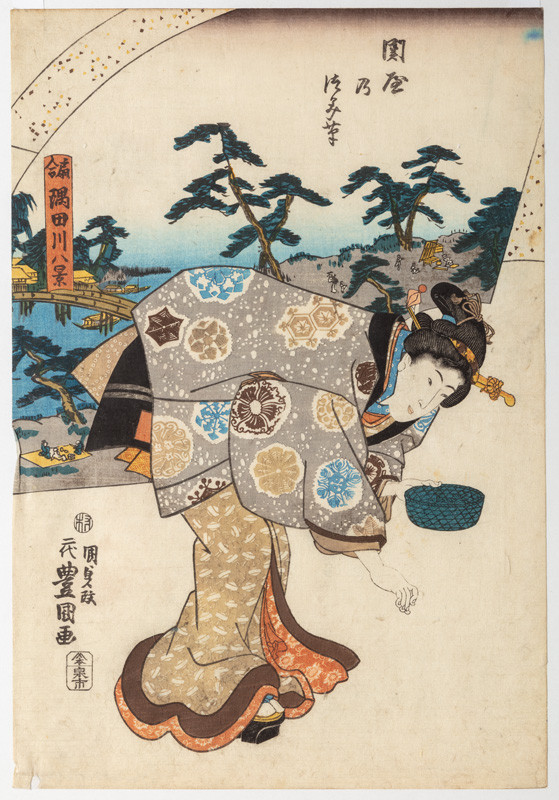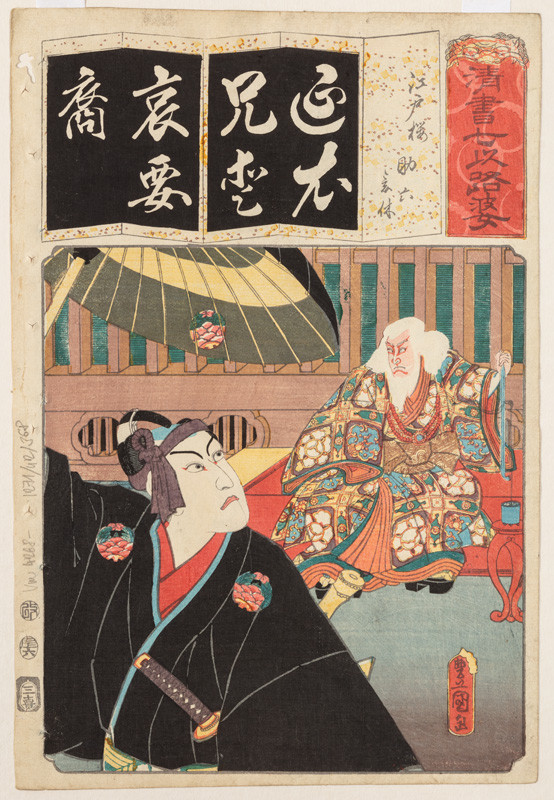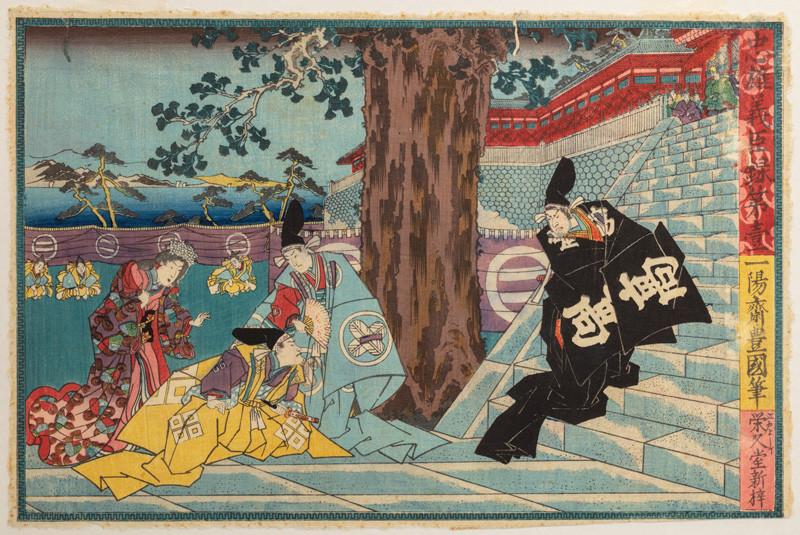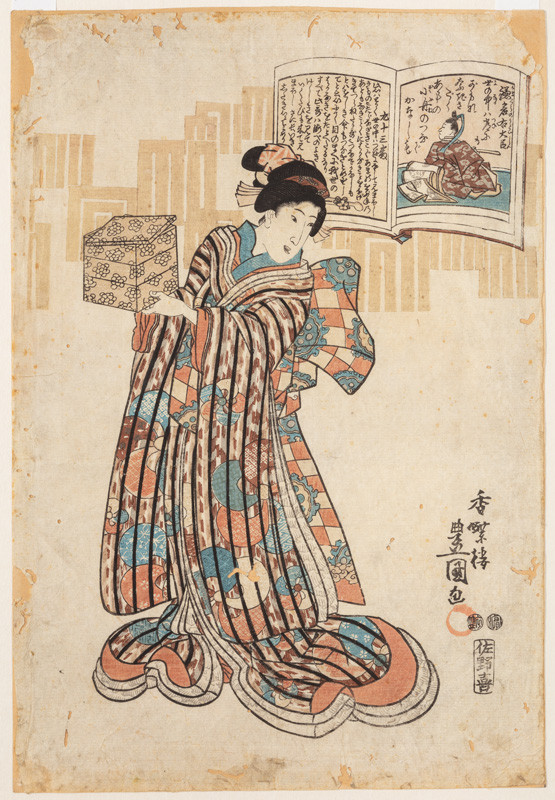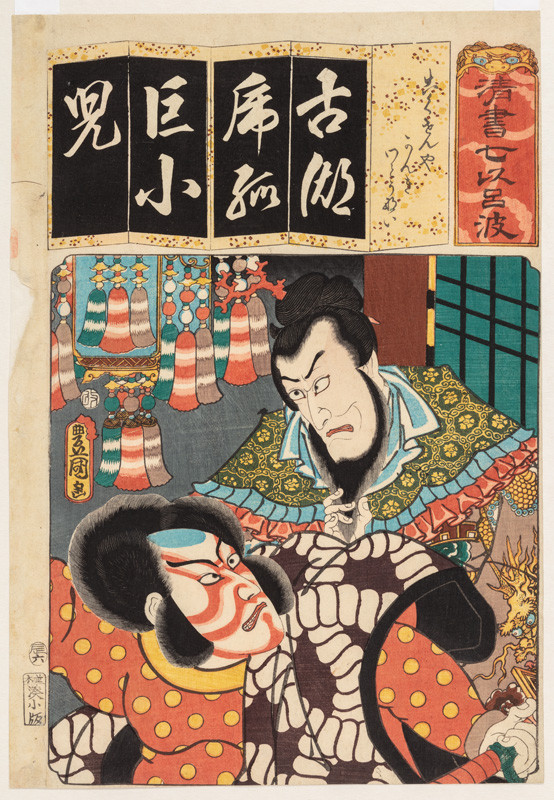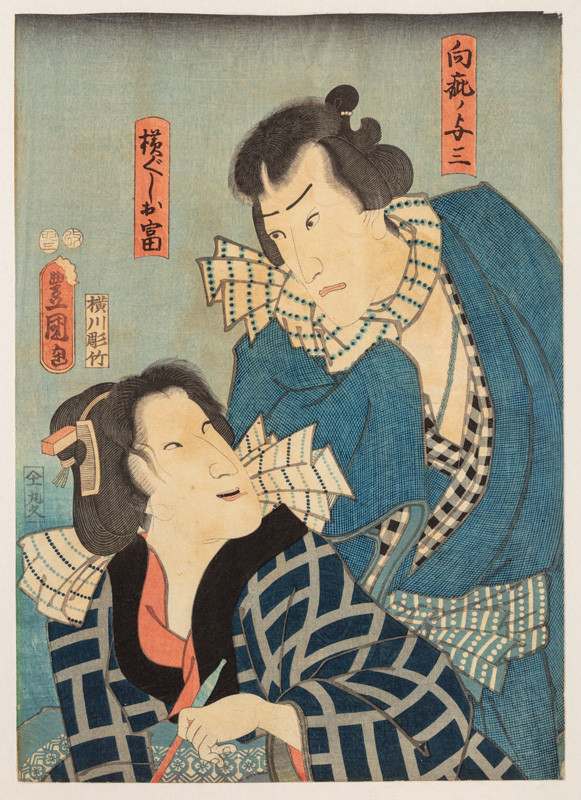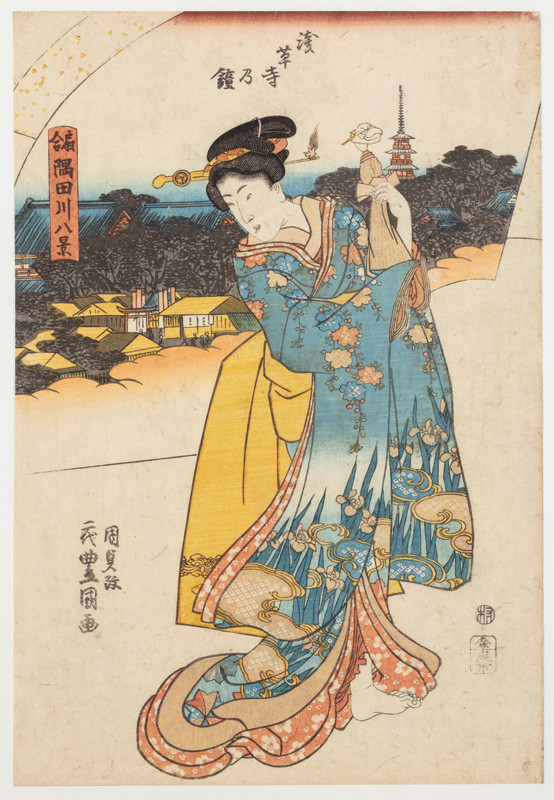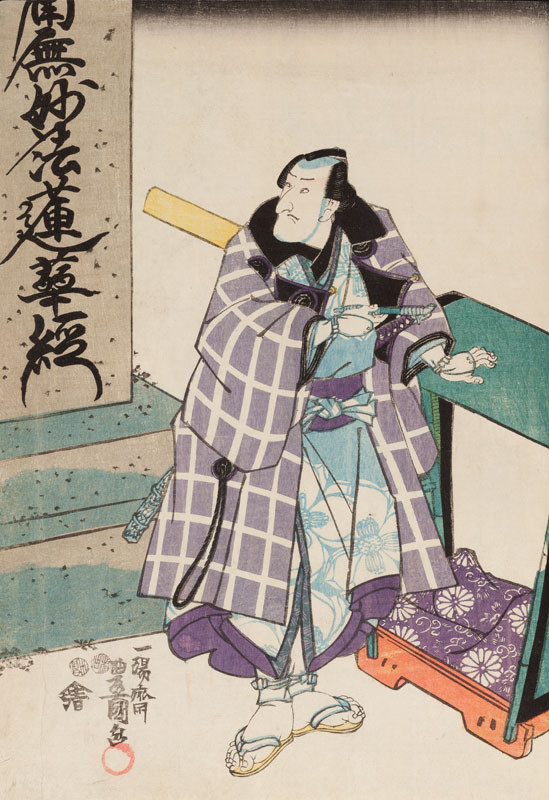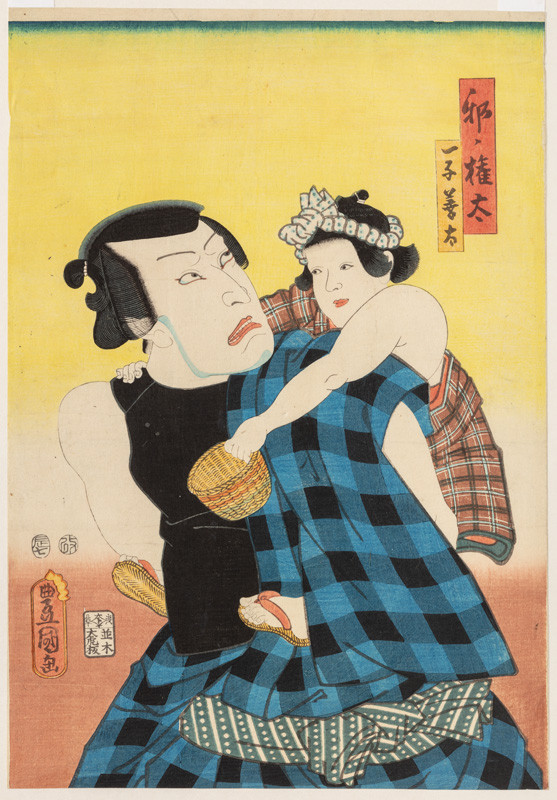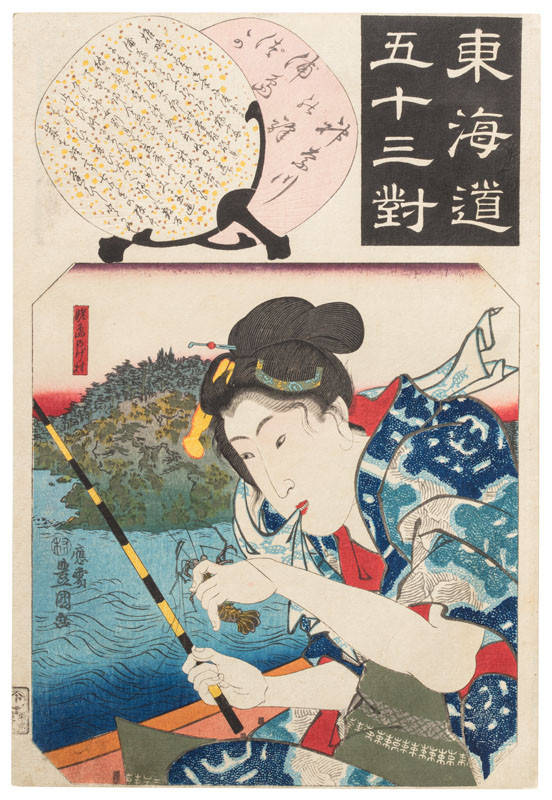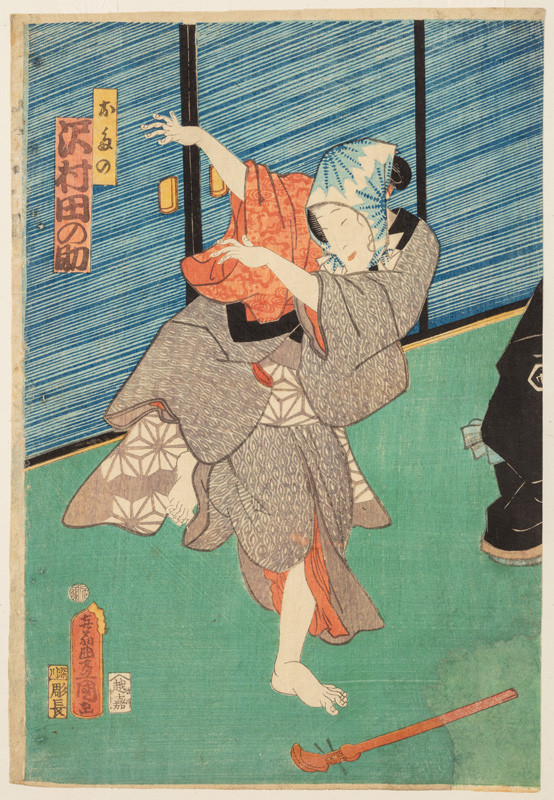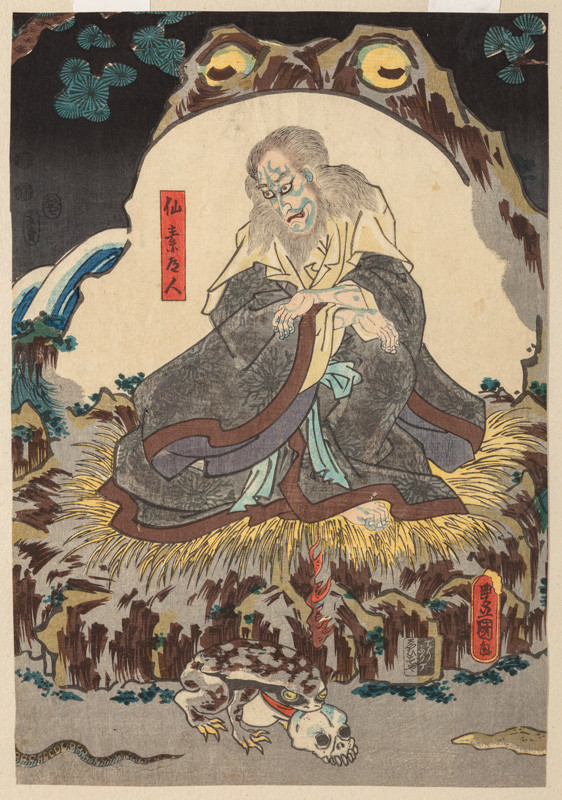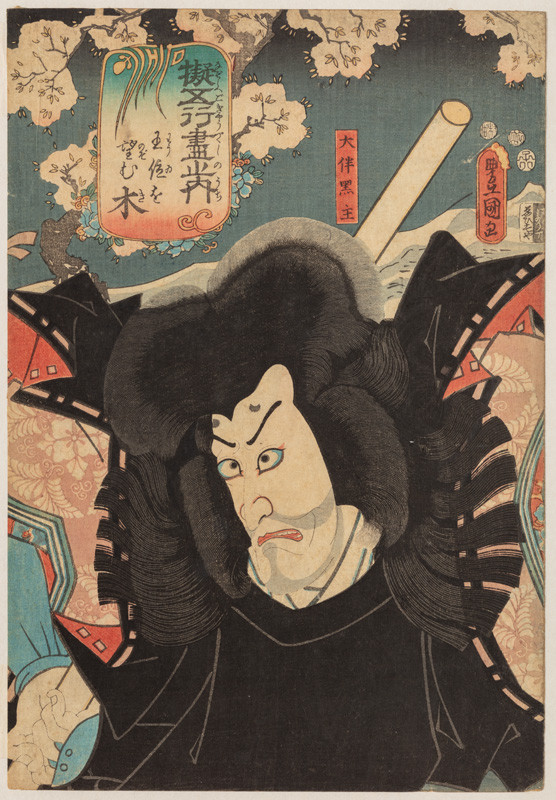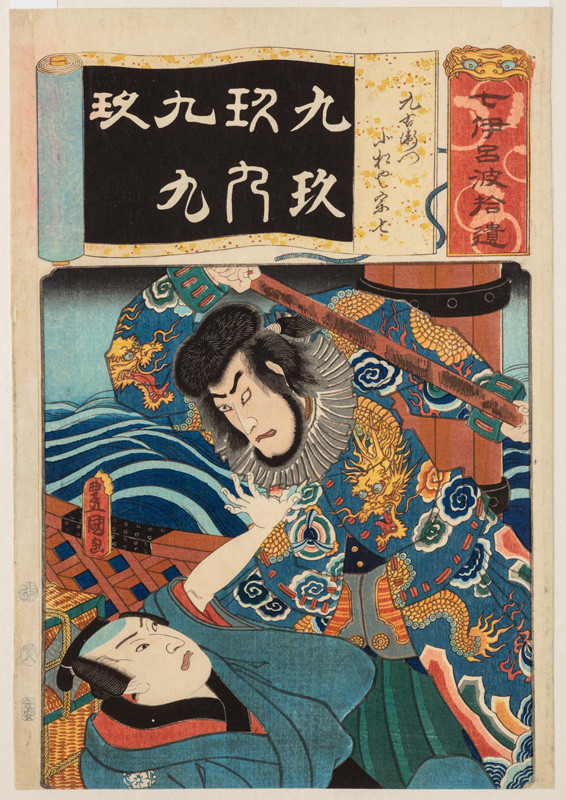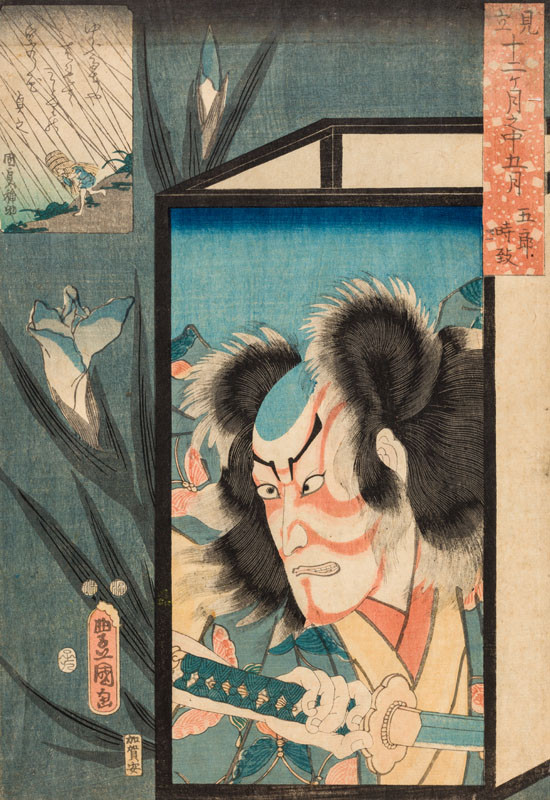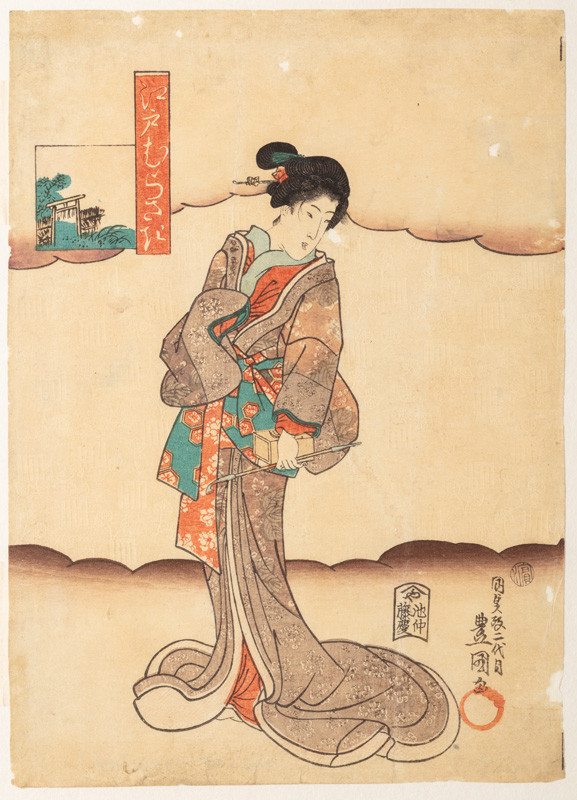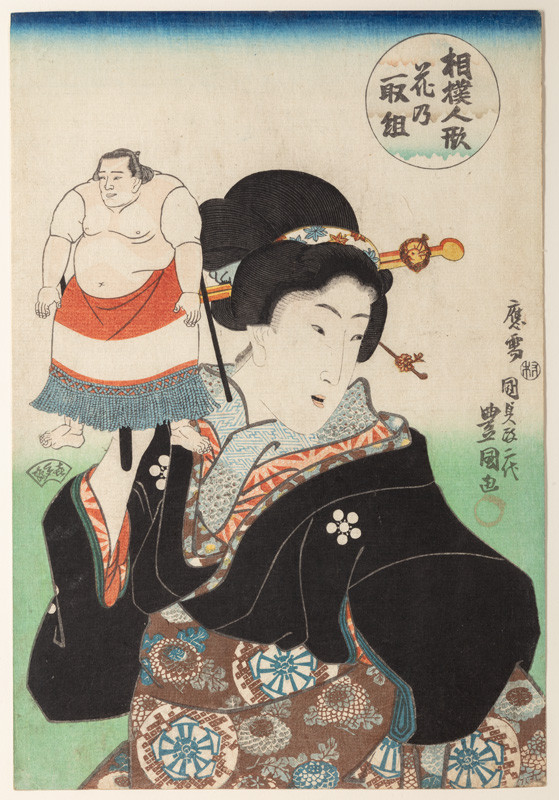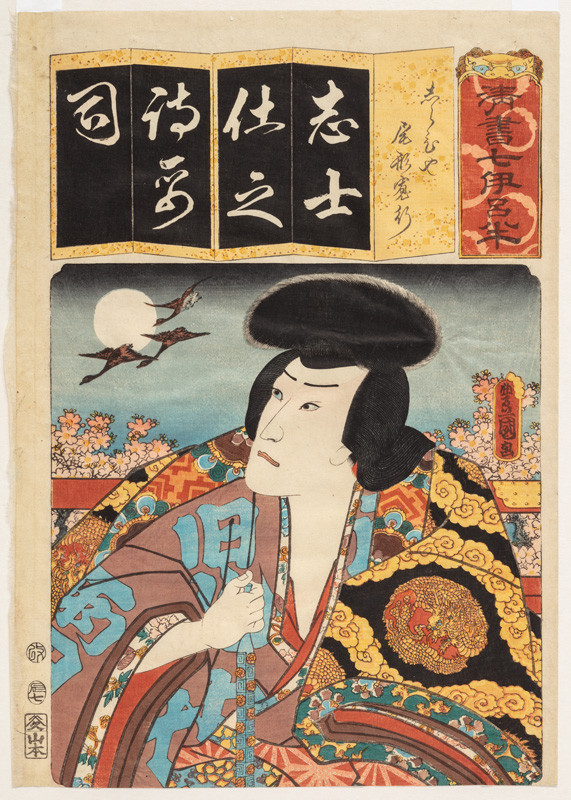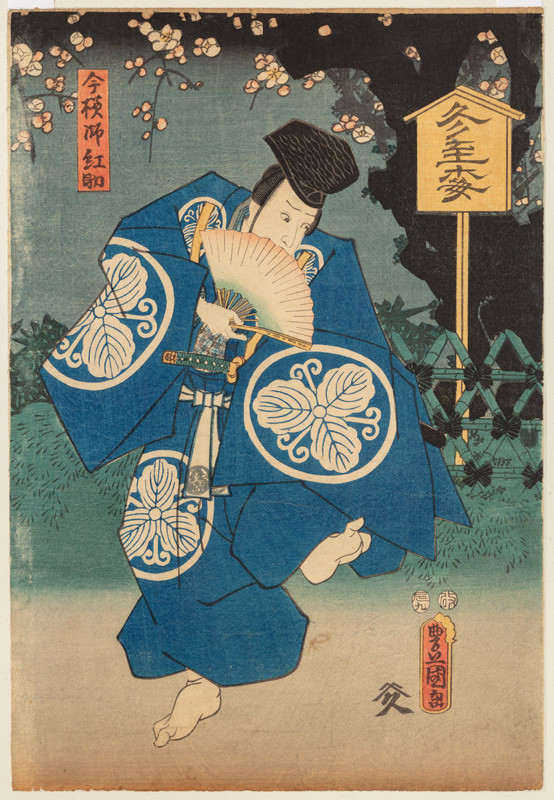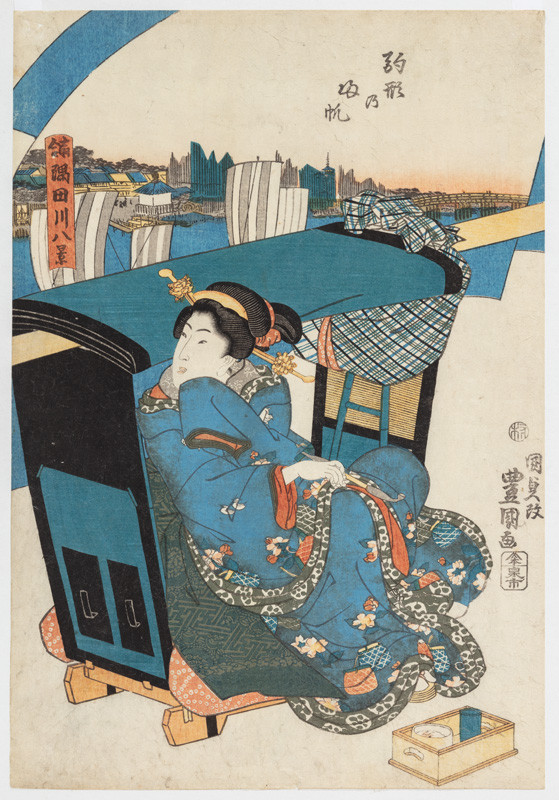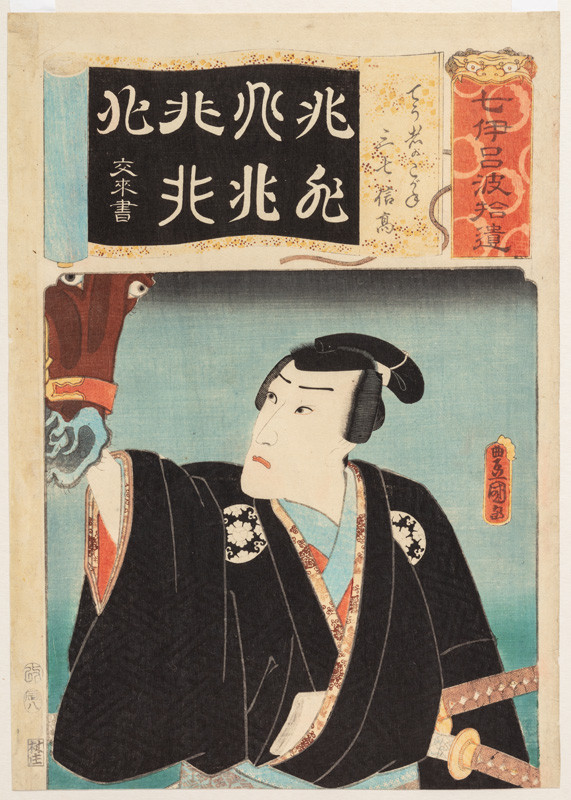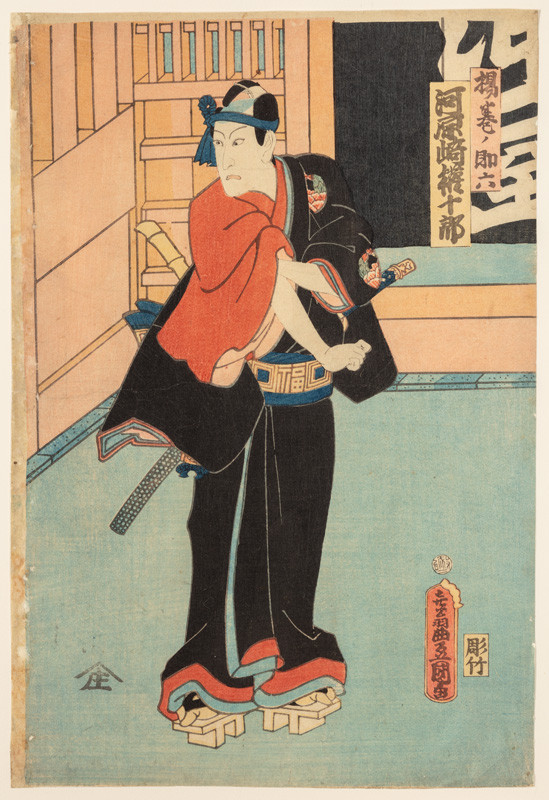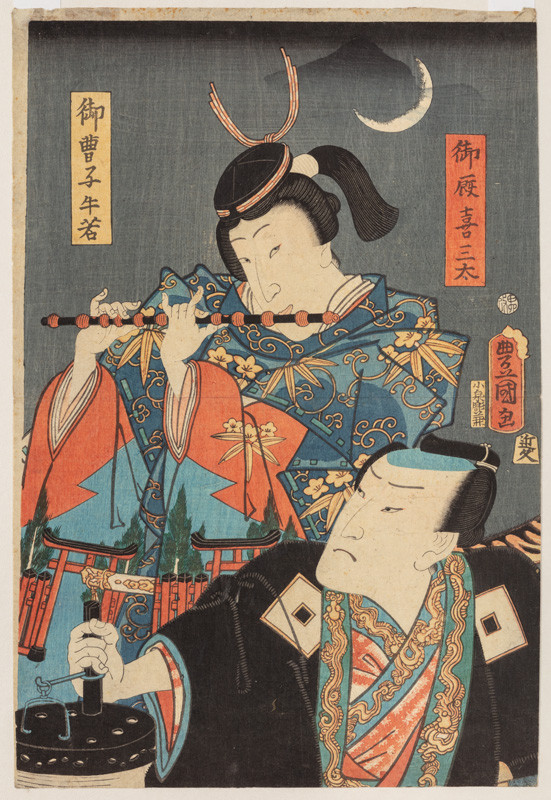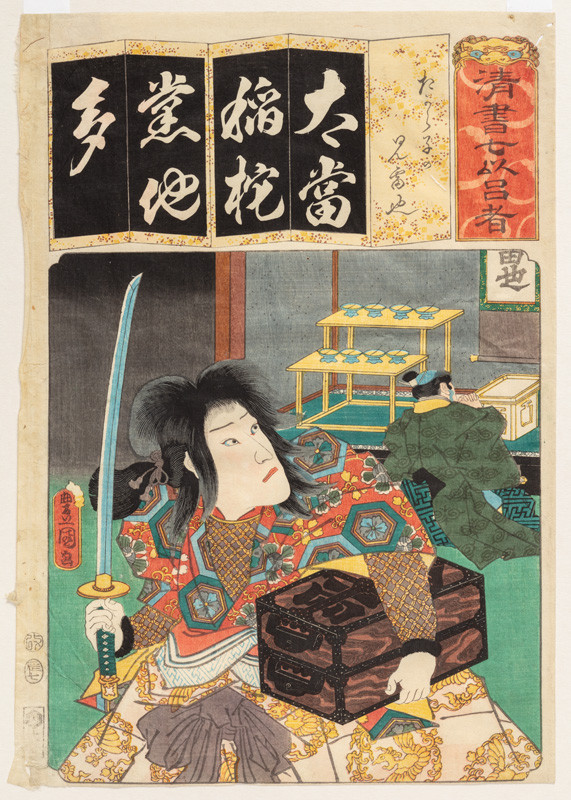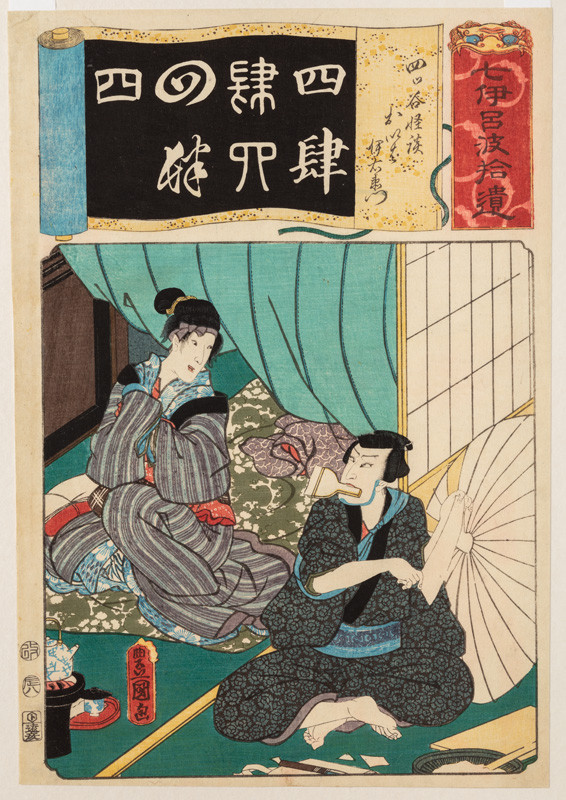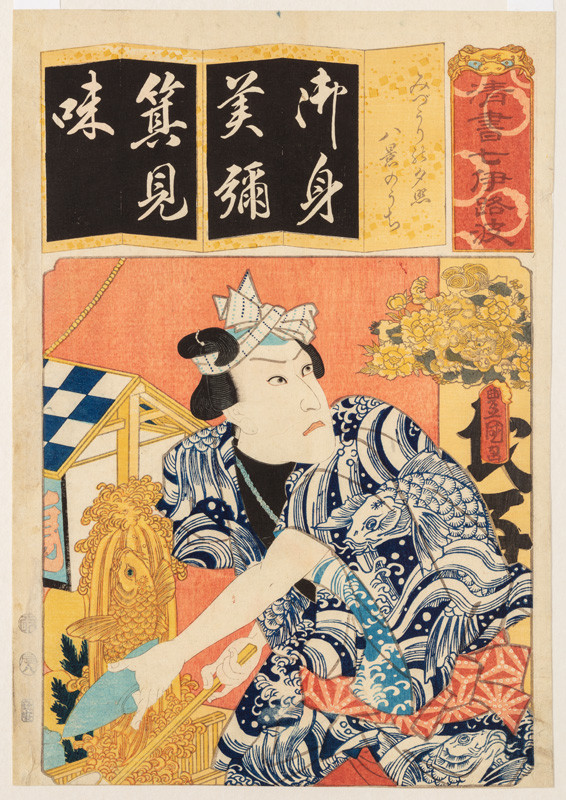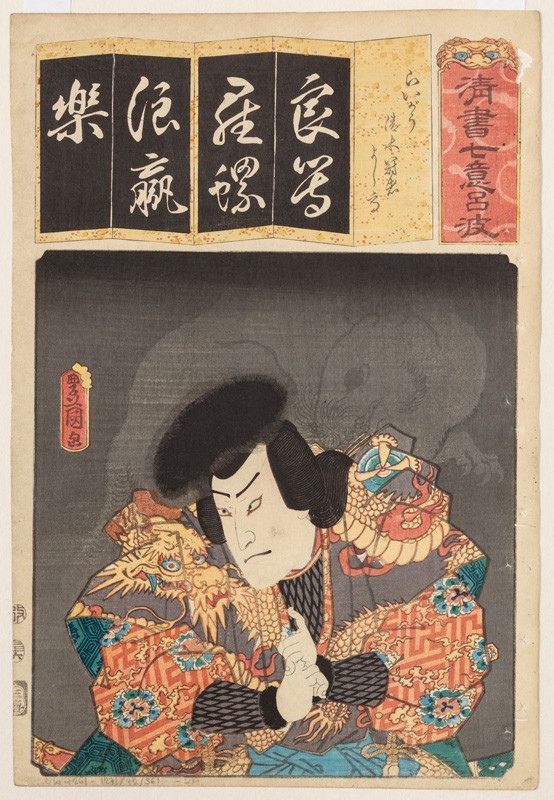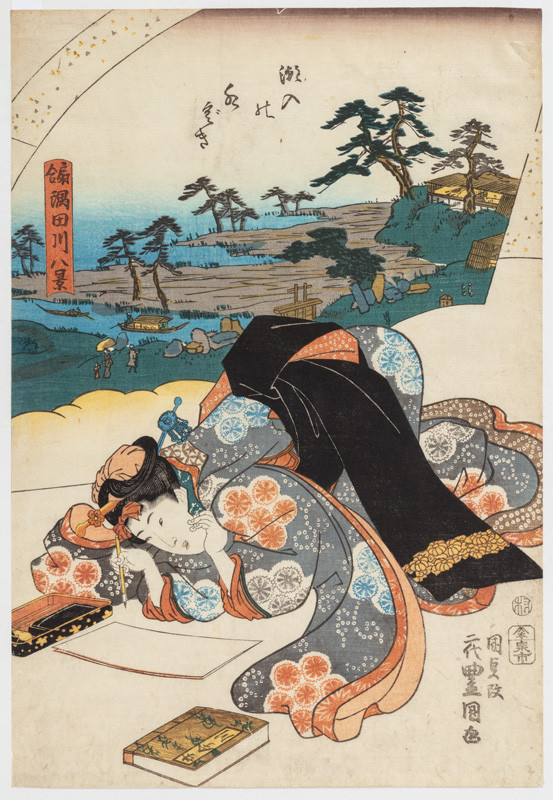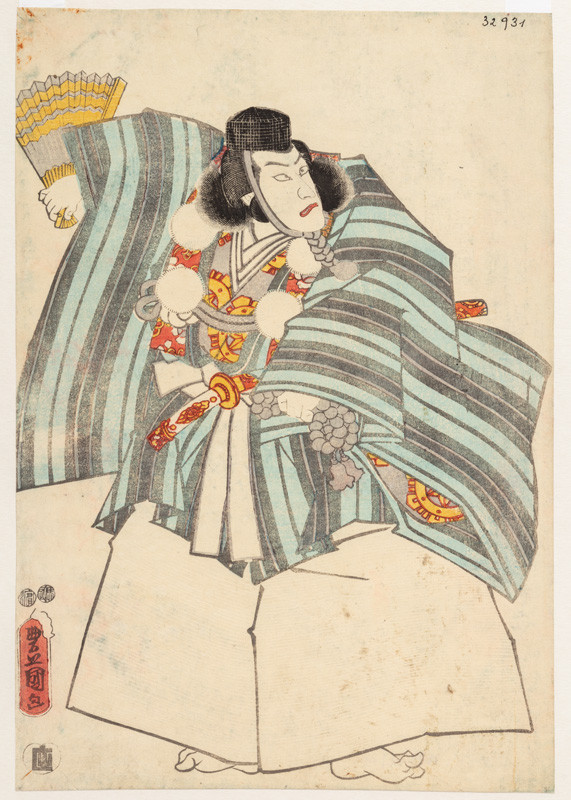
Kanjinchō, or the Subscription List, is one of the most famous kabuki dance-dramas originating from the classical aristocratic Nō theatre. It was performed with a pine tree in the stage background. It is part of the Eighteen Dramas (Jūhachiban) of the Ichikawa family. Its last version by Namiki Gohei III was performed in the Kawarazakiza Theatre in 1840, when the list of 18 dramas was codified by Ichikawa Danjūrō VII, who danced the character of Benkei. Benkei was a courageous mountain priest and warrior who had been in the services of Minamoto no Yoshitsune since childhood. Yoshitsune, brother of the first Kamakura shōgun Yoritomo, became a courageous and clever strategist and won many battles against the Taira family. Yoritomo was jealous of his brother’s success in battle and ordered that Yoshitsune be summoned. Yoshitsune fled across the snowy mountains in the company of Benkei and a small company of loyalists. They had to disguise themselves as carriers to make it north across the heavily guarded Ataka toll station. The toll guard, Commander Togashi Saemon, recognized the young carrier and detained the group, but pretended he believe Benkei, who lied that the group was wandering all over the country collecting money for the construction of a monastery. Benkei, wearing a winter coat with pompons on its back, performed an expressive dance and read a long list of subscribers willing to donate money for the monastery construction from a blank sheet of paper. He even barked at a lazy “carrier” and beat him with his stick. That persuaded the guards that the carrier could not be general Yoshitsune, because no servant would dare beat his master. The chief guard let the group pass the toll gate – Benkei won the group’s freedom by dancing. (See Helena Honcoopová, Kunisada, Praha 2005, p. 138)

